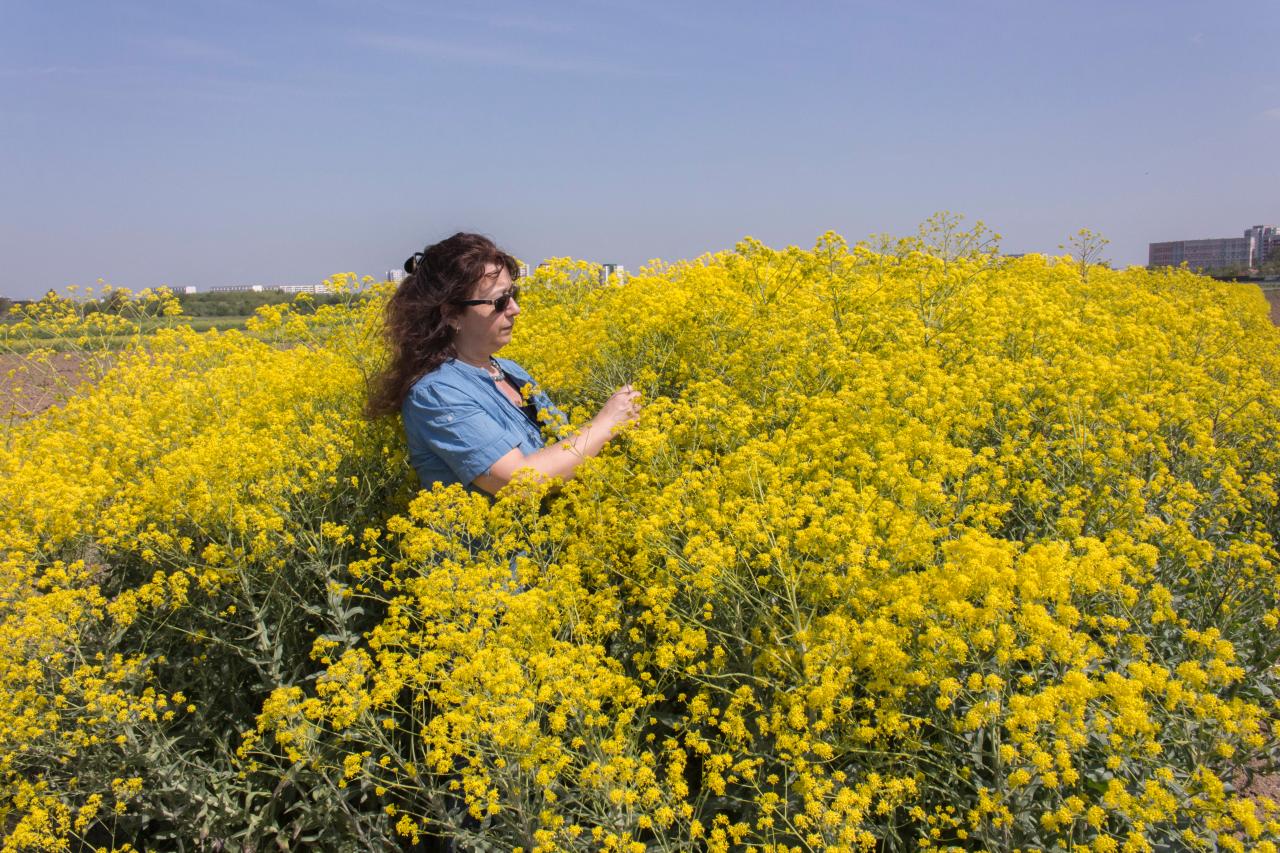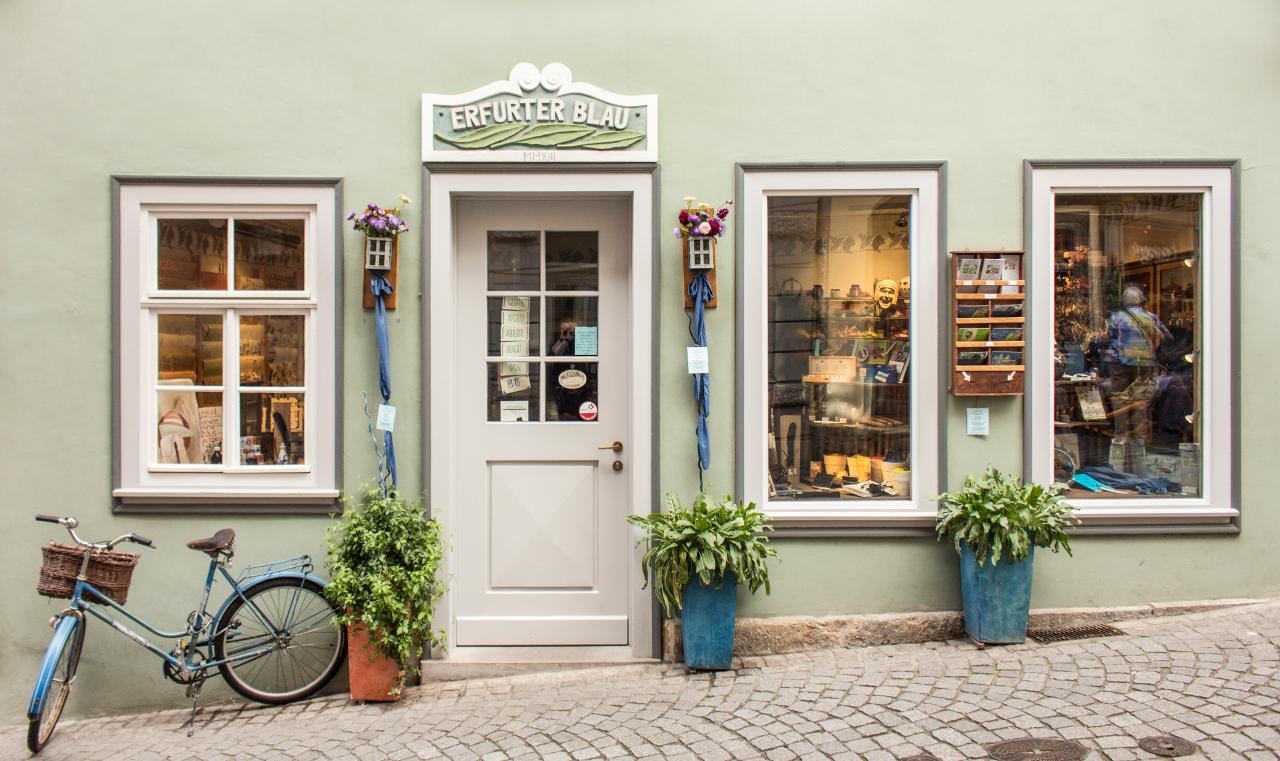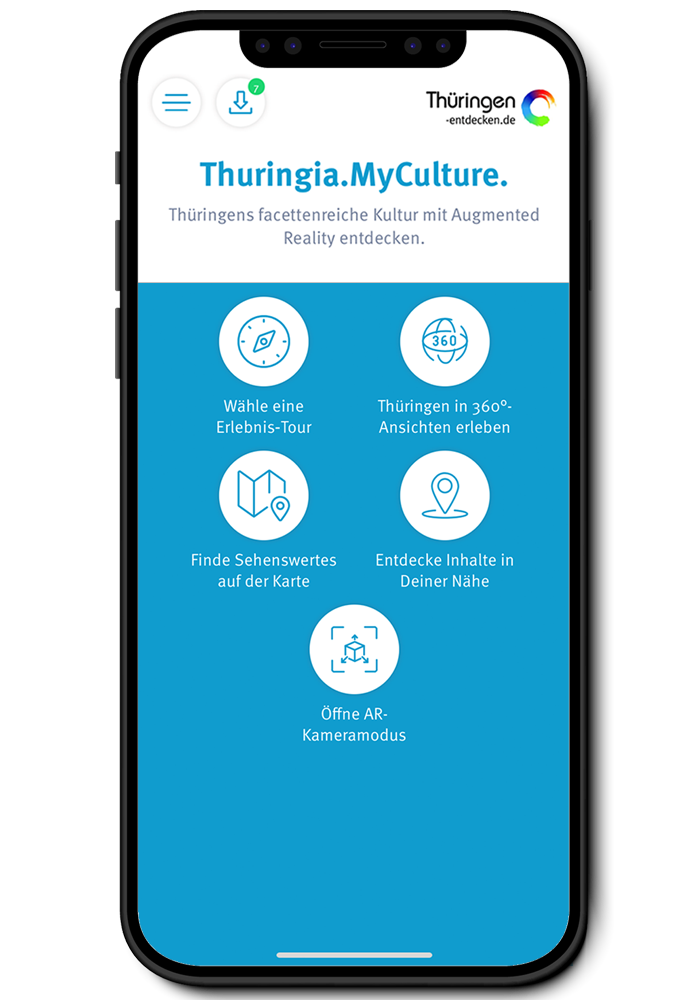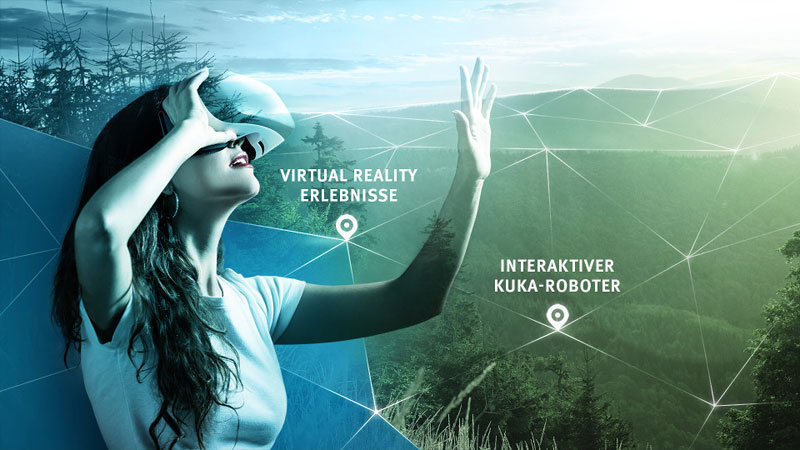Visit the state capital Erfurt and go on a virtual discovery tour through Thuringia.
Erfurt and the colour blue
Woad on the Merchants’ Bridge
Dyer’s woad

Rosanna Minelli between woad plants ©Vera Dähnert, Agentur Gutes Zeichen
But the inhabitants learned to live with this, as the woad business was a lucrative one. The precious dye was traded across borders and brought wealth to the city of Erfurt. While the splendid merchants’ houses of the woad traders still adorn the city today, the trade in woad collapsed in the 17th century as cheaper indigo from overseas flooded the market. “I wouldn’t want this plant to be forgotten,” says Minelli, who hails from Genoa and originally moved to Thuringia to work as an art restorer. She now grows woad and uses it to dye fabrics. Her shop, aptly named ‘Erfurter Blau’ (Erfurt Blue), sells scarves and other neckwear, cushions and romper suits – all dyed using woad. She has even installed an old chewing gum dispenser in front of the shop where you can buy woad seeds for two euros. Minelli has also set up woad workshops and guided tours dedicated to the history of dyer’s woad. Bringing about a renaissance of woad is a cause that is close to her heart.

Erfurter Blau on the Merchants' Bridge ©Vera Dähnert, Agentur Gutes Zeichen

Waidspeicher Theatre
Woad is by no means the only plant upon which Erfurt’s fortune depended for many years. The state capital of Thuringia is closely associated with horticulture, garden design and the trade in plant and vegetable seeds, and has been known as the ‘flower city’ for many decades. Modern-day commercial horticulture in Erfurt was the brainchild of Christian Reichart, an entrepreneurial lawyer. One of Germany’s most popular landscape parks is egapark, visited by just over half a million people a year and home to the German Horticultural Museum. As early as 1865, a ‘German exhibition of agricultural and horticultural products’ was held in the historical part of egapark. No other German city could have been better suited as the venue for the Federal Horticultural Show 2021 than Erfurt.
Indigo blue dying in the Dürerhaus workshop
Did you like this story?
Maybe, you'll like this too ...













